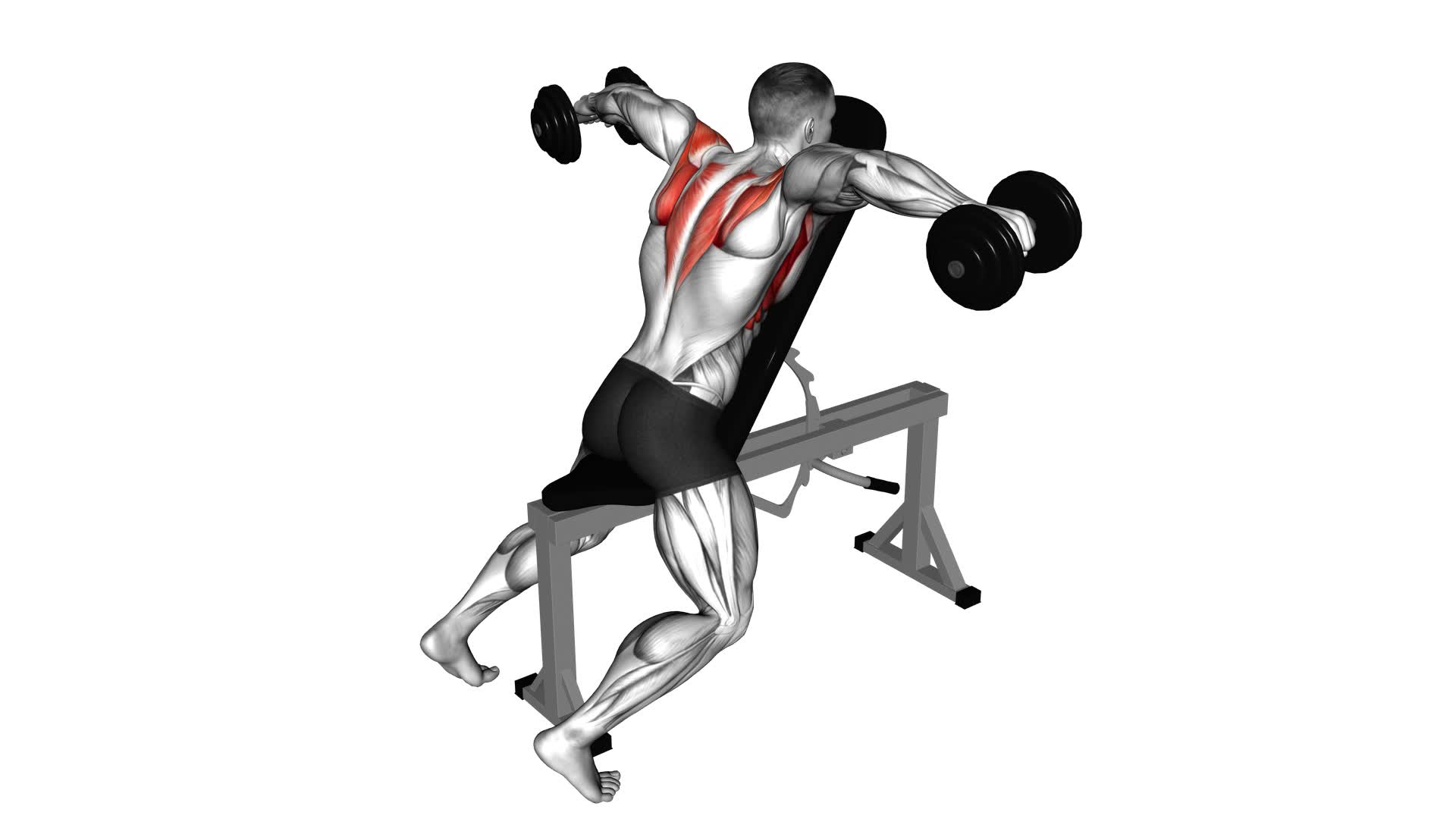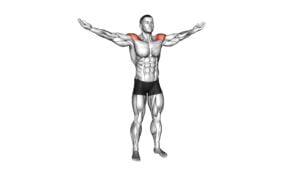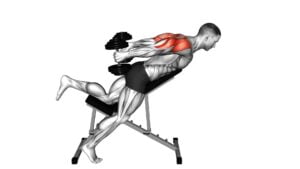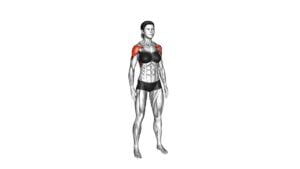Dumbbell Chest Supported Lateral Raises – Video Exercise Guide & Tips

Are you looking to strengthen and tone your shoulders? Then you need to try dumbbell chest supported lateral raises!
Watch This Exercise Video
This exercise targets your deltoids and helps improve shoulder stability. In this article, we'll guide you through the proper form and technique, common mistakes to avoid, and tips to maximize your results.
Plus, we've included variations and progressions to keep challenging yourself.
Get ready to sculpt those shoulders and achieve your fitness goals!
Key Takeaways
- Dumbbell Chest Supported Lateral Raises target and strengthen deltoid muscles.
- They improve shoulder stability and build overall shoulder strength.
- These exercises enhance posture and reduce the risk of shoulder injuries.
- They also increase shoulder muscle strength and improve muscle definition in the shoulders.
Benefits of Dumbbell Chest Supported Lateral Raises
One of the main benefits of dumbbell chest supported lateral raises is that they target and strengthen your deltoid muscles. These raises are a great way to activate and engage your shoulder muscles, specifically the lateral deltoids. By using dumbbells and supporting your chest on an incline bench, you're able to isolate and focus on your shoulder muscles, ensuring proper form and maximizing muscle activation.
This exercise also helps to improve shoulder stability, as it requires controlled movements and balance. Additionally, dumbbell chest supported lateral raises can help in building overall shoulder strength, which is essential for everyday activities and sports performance. By incorporating this exercise into your routine, you can enhance your shoulder strength and stability, leading to improved posture and reduced risk of shoulder injuries.
The benefits of dumbbell chest supported lateral raises extend beyond just the deltoid muscles, as they also engage and strengthen your trapezius and upper back muscles. Overall, this exercise is a valuable addition to any shoulder workout, providing numerous benefits and improving muscle activation.
Proper Form and Technique for Dumbbell Chest Supported Lateral Raises
To perform dumbbell chest supported lateral raises with proper form and technique, start by lying face down on an incline bench with a dumbbell in each hand. This exercise primarily targets the chest muscles and helps to improve shoulder stability.
To begin, position your body on the incline bench so that your chest is supported and your feet are firmly planted on the ground. Hold a dumbbell in each hand with your palms facing inwards towards your body.
Keeping your arms straight, slowly raise the dumbbells out to the sides until they're parallel to the floor. Be sure to maintain control throughout the movement and avoid using momentum.
At the top of the movement, squeeze your shoulder blades together to engage the chest muscles. Pause briefly before slowly lowering the dumbbells back down to the starting position.
Remember to breathe throughout the exercise, exhaling as you raise the dumbbells and inhaling as you lower them. It's important to use a weight that challenges you but still allows you to maintain proper form.
Common Mistakes to Avoid During Dumbbell Chest Supported Lateral Raises
To avoid common mistakes during dumbbell chest supported lateral raises, focus on maintaining proper form and avoiding these errors.
One common mistake is using too heavy of a weight. It's important to choose a weight that allows you to perform the exercise with proper form and control. Using a weight that's too heavy can compromise your form and increase the risk of injury.
Another mistake to avoid is swinging the weights. This often happens when the weight is too heavy or when you're using momentum to lift the weights. Instead, focus on using controlled movements and lifting the weights up to shoulder height without swinging or jerking.
Additionally, make sure to keep your core engaged and your back flat against the bench throughout the exercise. This will help stabilize your body and prevent any excessive arching or rounding of the back.
Lastly, avoid shrugging your shoulders or lifting them up towards your ears. Keep your shoulders relaxed and down throughout the movement.
Tips to Maximize Your Results With Dumbbell Chest Supported Lateral Raises
To maximize your results with dumbbell chest supported lateral raises, focus on proper technique and incorporating progressive overload. Here are some tips to help you improve your shoulder strength and target the rear delts effectively:
- Maintain a neutral spine: Keep your back straight and avoid arching or rounding your back during the exercise. This will ensure proper alignment and reduce the risk of injury.
- Engage your core muscles: Tightly activate your abdominal muscles throughout the movement to stabilize your body and enhance your overall strength.
- Use a controlled tempo: Slowly raise the dumbbells to the sides and maintain control as you lower them back down. Avoid swinging or using momentum to lift the weights as this diminishes the effectiveness of the exercise.
- Focus on the rear delts: Imagine squeezing your shoulder blades together as you lift the dumbbells. This will help isolate and engage the rear delts more effectively.
- Increase weight gradually: As you become stronger, progressively increase the weight of the dumbbells to continue challenging your muscles and promoting growth.
- Pay attention to form: Proper form is crucial for targeting the intended muscles and preventing injury. If you're unsure about your technique, consider consulting with a certified fitness professional for guidance.
Variations and Progressions for Dumbbell Chest Supported Lateral Raises
To progress your dumbbell chest supported lateral raises, you can incorporate variations that target different areas of the shoulders and provide a greater challenge. One variation you can try is performing dumbbell chest supported lateral raises with resistance bands. This adds an extra level of resistance to the exercise, making it more challenging for your shoulder muscles. Start by attaching the resistance bands to the dumbbells and then perform the lateral raises as you normally would. The resistance bands will provide constant tension throughout the movement, increasing the intensity of the exercise.
Another way to progress your dumbbell chest supported lateral raises is by incorporating them into a full body workout routine. This allows you to work multiple muscle groups while also targeting your shoulders. For example, you can pair the lateral raises with exercises like push-ups, squats, or lunges to create a comprehensive workout. By combining different exercises, you engage various muscles and increase the overall intensity of your workout.
Remember to start with lighter weights and gradually increase the resistance as your strength improves. It's important to maintain proper form throughout the exercise to avoid injury and maximize results. With these variations and progressions, you can continue challenging your shoulder muscles and see continued improvement in your strength and muscle definition.
Frequently Asked Questions
How Heavy Should the Dumbbells Be for Chest Supported Lateral Raises?
For chest supported lateral raises, you might be wondering how heavy the dumbbells should be. The ideal dumbbell weight depends on your fitness level and strength.
Start with a weight that challenges you but allows you to maintain proper form. A good starting point is 5-10 pounds for beginners and 10-15 pounds for more advanced lifters.
If you don't have dumbbells, you can use alternative equipment like resistance bands or water bottles filled with sand or water.
Can I Perform Chest Supported Lateral Raises With a Resistance Band Instead of Dumbbells?
Yes, you can perform chest supported lateral raises with a resistance band instead of dumbbells.
Using resistance bands for this exercise provides a different type of resistance that can target your muscles in a unique way.
It also allows for a wider range of motion and can be easier on your joints.
Resistance bands are a versatile and portable option for adding variety to your workout routine.
How Many Sets and Reps Should I Do for Chest Supported Lateral Raises?
For chest supported lateral raises, the number of sets and reps can vary depending on your goals and fitness level. Generally, it's recommended to start with 3 sets of 10-12 reps.
This exercise targets your shoulder muscles and helps improve shoulder stability and strength. It also has the added benefit of reducing strain on your lower back compared to standing lateral raises.
You can also try variations like using resistance bands or adjusting the bench angle to target different muscle groups.
Should I Feel a Burning Sensation in My Shoulders During Chest Supported Lateral Raises?
During chest supported lateral raises, it's common to feel a burning sensation in your shoulders. This burning sensation is a result of the muscles in your shoulders working hard and it indicates that you're properly engaging those muscles. It's important to push through the discomfort and continue with the exercise.
However, if the burning sensation becomes too intense or is accompanied by sharp pain, it's a sign of overexertion and you should stop to prevent injury or shoulder fatigue.
Can Chest Supported Lateral Raises Help Reduce Shoulder Pain or Prevent Injuries?
Chest supported lateral raises can definitely help reduce shoulder pain and prevent injuries. By maintaining proper form, you engage the muscles in your shoulders and upper back, promoting stability and strengthening the surrounding joints.
Incorporating this exercise into your shoulder workout routine can also improve your overall shoulder strength and range of motion. So, if you're looking for an effective way to protect and strengthen your shoulders, give chest supported lateral raises a try.
Conclusion
In conclusion, dumbbell chest supported lateral raises are an effective exercise for targeting the muscles in the shoulders and upper back.
By maintaining proper form and technique, you can maximize your results and avoid common mistakes.
Incorporating variations and progressions into your routine can help you continuously challenge and strengthen these muscles.
By following these tips, you can enhance your workout and achieve your fitness goals.

Author
Years ago, the spark of my life’s passion ignited in my mind the moment I stepped into the local gym for the first time. The inaugural bead of perspiration, the initial endeavor, the very first surge of endorphins, and a sense of pride that washed over me post-workout marked the beginning of my deep-seated interest in strength sports, fitness, and sports nutrition. This very curiosity blossomed rapidly into a profound fascination, propelling me to earn a Master’s degree in Physical Education from the Academy of Physical Education in Krakow, followed by a Sports Manager diploma from the Jagiellonian University. My journey of growth led me to gain more specialized qualifications, such as being a certified personal trainer with a focus on sports dietetics, a lifeguard, and an instructor for wellness and corrective gymnastics. Theoretical knowledge paired seamlessly with practical experience, reinforcing my belief that the transformation of individuals under my guidance was also a reflection of my personal growth. This belief holds true even today. Each day, I strive to push the boundaries and explore new realms. These realms gently elevate me to greater heights. The unique combination of passion for my field and the continuous quest for growth fuels my drive to break new ground.







